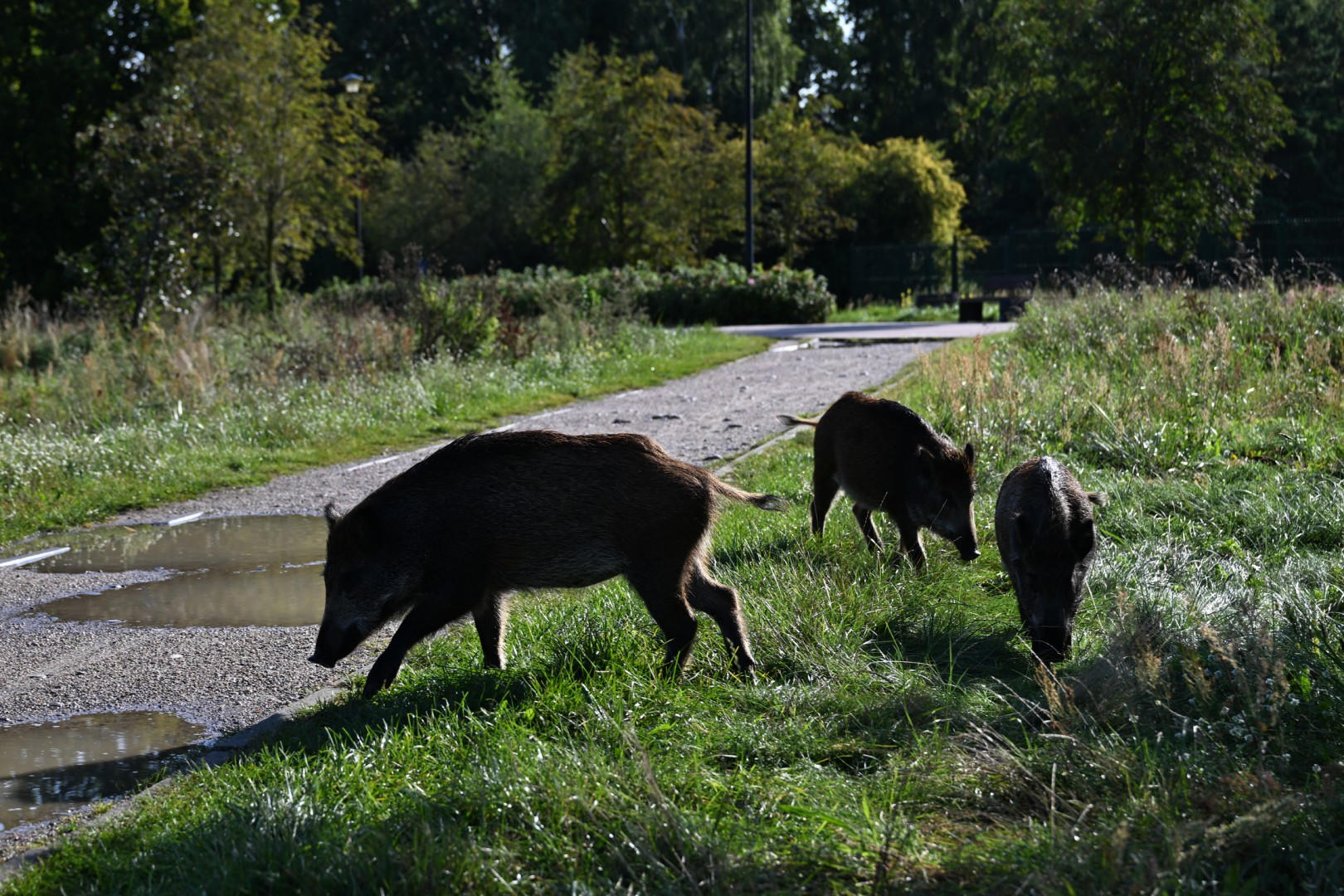
Misinformation spreads as Croatia battles African swine fever
- Published on November 28, 2025 at 13:48
- Updated on December 1, 2025 at 10:55
- 7 min read
- By Gabriela LULIC, AFP Croatia
Croatia has been affected by African swine fever (ASF) since 2023, with hundreds of cases confirmed in wild boars. To control the outbreak, the government announced a series of measures in October 2025 including culling, restrictions on animal movement and the establishment of biosecurity zones. Social media users responded by falsely claiming that there were no infected wild boars in Croatia and that the measures lack scientific and legal justification. However, experts and international organisations have confirmed the presence of ASF in Croatia, and AFP found that the measures are in line with European regulations and backed by science.
“I am sending you a very serious public appeal to withdraw the decision to shoot wild boars in three Slavonian counties. I assure you that the profession and science cannot stand behind such a decision," says an October 13 Facebook post attributed to Nada Jurinčić, a retired pediatrician known for her opposition to vaccination and whose claims have been debunked by AFP in the past. "At the same time, there are no reported cases of death of wild boars or clinical signs of disease in the free population," the post adds.
The text is from an open letter that further claims that culling wild pigs "represents a serious blow to the ecological balance and biological diversity" and that the "buffer zone" that the Croatian government intends to create through the killing of wild boars "does not exist in the professional or scientific literature on African swine fever".
Other posts (1, 2) from mid-October question whether the infections are real, speculating that -- since ASF is claimed to have a near‑100% mortality rate -- wild boars should be "extinct" by now. The posts have been shared more than 300 times in total.

African swine fever is a highly contagious viral disease affecting domestic and wild pigs that is present in regions of Africa, Asia, Europe and the Americas, according to the World Organisation for Animal Health (WOAH). The virus can be transmitted through contaminated feed or other infected materials, or through contact with infected pigs, wild boars or soft ticks. In its acute form, ASF causes high fever, internal bleeding and vomiting, among other symptoms, and its mortality rate can reach 100%. It is harmless to humans.
Globally, ASF has been reported in 69 countries in those four regions since January 2022, "affecting 1,085,416 pigs and 39,807 wild boars, causing 2,259,832 animal losses in domestic pigs", according to the latest data provided by WOAH.
African swine fever in Croatia
"There are no reported cases of death of wild boars or clinical signs of disease in the free population," Jurinčić alleges in her open letter.
However, Croatian authorities confirmed the first case of ASF in the country in 2023 in the Vukovar-Srijem region, and a new wave of infection in wild boars was recorded during 2025. As a result, the Ministry of Agriculture, Forestry, and Fisheries announced on October 10 "the complete culling of wild boars in three counties". When the measure was published in Narodne novine, it mentioned four affected regions: Virovitica-Podravina, Požega-Slavonia, Brod-Posavina, and Osijek-Baranja.
The Ministry of Agriculture reiterated to AFP on November 3 that African swine fever had been confirmed in wild boars in eastern Croatia. "By October 30, a total of 380 ASF cases in wild boars had been confirmed, including 361 in the Osijek-Baranja region, and 19 in the Vukovar-Srijem region. Among them, 169 wild boars died, while 211 cases were found in hunted animals," the ministry said.
According to data from the European Animal Disease Information System (ADIS), which tracks important infectious animal diseases, there were 221 outbreaks among wild boars in Croatia in 2025 by November 17 -- compared to 39 outbreaks between January 1 and November 19, 2024. The figure for the entire year 2023 was just 13.
With no authorised ASF vaccine in the European Union, the disease threatens the pig industry in Croatia. The country had more than 873,000 pigs on farms in 2024 and exported more than 285,600 of them worth around 57 million euros, according to the national statistics agency.
To confirm cases, authorities use reliable diagnostic methods that follow international standards, Dr. Lorena Jemerešić, scientific advisor and head of the National Reference Laboratory for ASF, told AFP on October 27.
The laboratory in charge of testing "conducts the most sensitive and specific diagnostic method, the real-time polymerase chain reaction" or RT-PCR, which detects "highly specific DNA segments of the ASF virus, and the protocol itself is extremely sensitive (97.77%) and specific (100%)," she said. The laboratory also tests for antiviral ASF antibodies, which "makes it possible to determine the duration of infection".
She further explained that Croatia started testing for ASF many years before the disease appeared in the country. "When the virus entered Europe in 2014, and especially after the appearance of infection in Hungary (2018) and Serbia (2019), an active ASF surveillance program was launched. From 2019 to the end of 2022, a total of 17,102 wild boars were tested."
After the first recorded cases of ASF among domestic pigs and wild boars in 2023, "during 2025, a new wave of infection in wild boars was identified. The virus was detected in the Vukovar-Srijem region. However, a larger outbreak occurred in the Osijek-Baranja region," she added.
The WOAH also lists new outbreaks in Croatia in 2025.
'Buffer zone'
In her open letter, Jurinčić writes: "It has been announced on the official website of the Ministry of Agriculture that wild boars will be shot in the hunting grounds of three Slavonian counties, with the explanation that this will create a so-called ‘buffer zone’ between the reservoir of the disease and domestic pigs. Such a decision has no scientific or professional basis."
In its October 10 press statement, the ministry did indeed use that term when mentioning the pre-emptive culling of wild boars. "This measure creates a buffer zone to prevent the virus from spreading to new areas," the press release stated.
While "buffer zone" (or "tampon-zona" in Croatian) is not the most commonly used terminology in this context, the concept exists in practice, experts explained.
"This zone is typically an ‘ASF-free’ area, meaning that the virus is not detected there, but strict surveillance and biosecurity measures are implemented to prevent any potential spread from the neighboring infected zone," Professor Dr. Zoran Luković from the University of Zagreb's Faculty of Agriculture, told AFP on October 20.
Ivan Budinski, a senior conservation specialist from the environmental association BIOM, told AFP on November 4: "The term 'tampon-zona' is not commonly used in the context of disease control, but rather in the context of wartime situations, although, in this case, it is understandable what it means."
Biosecurity measures applied in Croatia, as well as the measure of culling wild boars to prevent the spread of the disease, are based on regulations adopted by the European Commission. They include restrictions on the movement of pigs and pork products, the establishment of infected and at-risk zones, intensified monitoring, hunting controls, and proper disposal of carcasses. All these measures are aimed at limiting transmission between wild and domestic pigs.
"A specific restricted zone is introduced as an additional or extended zone around established mandatory restricted zones, and such a zone for ASF in wild boars is called a 'white zone' in EU terminology," the Ministry of Agriculture told AFP.
The guidelines on the prevention, control, and eradication of African swine fever in the European Union state that "the establishment of such white zones might be an effective tool for limiting the spread of the disease in the wild porcine animal population".
Dr. Jemeršić explained why these kinds of measures can be useful. "Wild boars can transmit the virus to domestic pigs when they come into contact with their habitats or carcasses. (...) Only by completely preventing contact between domestic and wild pigs, whether direct or indirect, can interspecies transmission be prevented."
Controlled culling
Viral social media posts also criticized the decision to cull all wild boars in some regions to prevent further infections. According to Jurinčić's open letter, "it is an administrative construction without biological and epidemiological sense" that is not foreseen in international guidelines and "represents a heavy blow to the ecological balance and biological diversity".
Other users questioned the real objective of such a measure, arguing that, given that the disease has a mortality rate nearing 100%, wild boars should already be "extinct" after two years of ASF in Croatia.
The Ministry of Agriculture told AFP that the ASF virus poses a threat to the wild boar population and that reducing their numbers is considered an effective way to limit further transmission. "In countries where the disease has appeared, wild boars have been almost completely wiped out. For this reason, it is considered more effective to reduce their numbers to the lowest possible level before the disease spreads," the ministry said.
The handbook prepared by the Standing Group of Experts on ASF in Europe notes that population reduction can be used as a control measure in regions where the virus is circulating, although it has some limitations and has to be supplemented by other measures.
Even if the complete elimination of wild boars were achieved at the local level, reinvasion from neighbouring areas would soon occur, and the virus can persist in the environment and in contaminated products, so the absence of wild boar does not guarantee the disappearance of the risk, the document states.
Culling is also mentioned in EU legislation: "Culling should be considered for the reduction of the population of wild porcine animals, in particular in newly infected zones or areas at risk."
Regarding the ecological balance, the sources consulted by AFP had differing views, but agreed that the wild boar population had grown in recent years, and that killing some of them would not create an imbalance.
"Because of abundant food, mild winters caused by climate change, and the lack of natural predators, their population has grown far beyond what is needed for ecological balance," the Ministry of Agriculture said.
"Completely removing wild boars from the ecosystem will not have immediate negative effects; on the contrary, some species will gain an opportunity they had lost due to the unnaturally high number of wild boars," added Budinski from BIOM.
He said he believed Croatia had been mismanaging the wild boar population for many years. "The traditional method of 'supplemental feeding', originally intended to prevent high winter mortality, has turned into large-scale year-round feeding of wild boar. The thousands of tons of corn used for this purpose in Croatia have caused a massive and unnatural increase in their population."
Professor Luković emphasized that the key issue was prioritising the protection of pig farming, "which is the most important branch of livestock production in Slavonian counties".
UPDATES to clarify job title in 12th paragraphDecember 1, 2025 UPDATES to clarify job title in 12th paragraph
Copyright © AFP 2017-2025. Any commercial use of this content requires a subscription. Click here to find out more.
Is there content that you would like AFP to fact-check? Get in touch.
Contact us
